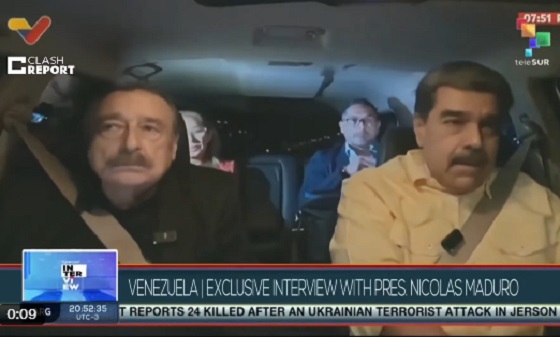Business
Aging Boomers To Leave Trillions To Kids – Or Will They?

Say you are a millennial or Gen Xer – that is, anyone born after 1964. You are, if a Gen Xer, pondering retirement with some anxiety, and watching in horror as your body enters middle age. If a millennial you’re possibly just stressed out about everything, or so the stereotype goes, anything but that distant mirage called retirement.
One thing is certain though – both those groups, and other institutions, are intently watching that huge pile of Boomer money, the multi-trillion-dollar wealth transfer that has bulked up spectacularly over the past decades. Where is it going to go to, how, and what will the recipients do with it?
There is a danger in thinking of this too simplistically, that the death of the boomers will mean boomer children gathered for the reading of the will simply be handed huge cheques with which to go frolic in the sunshine. Others see the looming wealth transfer as a vast turbo for the stock market, assuming that hordes of inheritors will park their money in stocks (bonds are too boring and pay nothing – not an easy sell to jaded youth) if the world survives the coronavirus meltdown (and if it doesn’t, there will be much bigger worries at hand, like trying to learn how to grow a carrot or chop firewood with that dull axe in the garage).
Of course the answer is far more complex than that; some inheritors will travel, some will invest, some will buy houses, and some will party like its 1999. Some stubborn boomers will not die for a very long time – recall that the Boomers are defined as being born before 1946 and 1964, or now aged between 74 and 56 – spring chickens here in the western world. How they will spend it is purely speculative and individual, but it’s worth considering some of the aspects that we know will happen for sure.
Demographically, children of boomers have tended to move to large centers, become urbanized, and not as enamored of the two cars in a two-car garage in the suburbs boomer mecca. A large question then becomes: what happens to all that boomer habitat?
A Google search of boomer homes indicates somewhere between 20 and 30 million homes in the US (and probably directly proportional in Canada) own homes (the number depending on vacation properties, rentals, etc.) are owned by boomers. Most of these are in suburbia, where millennials are not all that keen on hanging out. So, as one Wall Street Journal article from late 2019 asks, Boomers: Who’s going to buy your 21 million homes?
This is an important question, because much of that boomer wealth is tied up in those paid-for homes. Now, how does that muddy the waters?
We’ve tended to see the wealth transfer as a bunch of cash being thrown to inheritors, but what if the inheritance is millions of McMansions and other suburban treasures that few millennials want? What happens to the value of that pile, and, for the tail end of boomers and Gen Xers, what happens to the value of that real estate?
Given the fact that millennials prefer experience to stuff – that is, they tend to be motivated by things other than bigger fancier cars and bigger fancier houses – they may choose to take time traveling, or extreme-sporting to deal with anxious lives, or lord knows what. But we do know also that the younger generation is not nearly as interested in the stock market, so maybe that vast wealth transfer will turn out to be anything but what we imagine.
For more stories, visit Todayville Calgary
Business
The great policy challenge for governments in Canada in 2026

From the Fraser Institute
According to a recent study, living standards in Canada have declined over the past five years. And the country’s economic growth has been “ugly.” Crucially, all 10 provinces are experiencing this economic stagnation—there are no exceptions to Canada’s “ugly” growth record. In 2026, reversing this trend should be the top priority for the Carney government and provincial governments across the country.
Indeed, demographic and economic data across the country tell a remarkably similar story over the past five years. While there has been some overall economic growth in almost every province, in many cases provincial populations, fuelled by record-high levels of immigration, have grown almost as quickly. Although the total amount of economic production and income has increased from coast to coast, there are more people to divide that income between. Therefore, after we account for inflation and population growth, the data show Canadians are not better off than they were before.
Let’s dive into the numbers (adjusted for inflation) for each province. In British Columbia, the economy has grown by 13.7 per cent over the past five years but the population has grown by 11.0 per cent, which means the vast majority of the increase in the size of the economy is likely due to population growth—not improvements in productivity or living standards. In fact, per-person GDP, a key indicator of living standards, averaged only 0.5 per cent per year over the last five years, which is a miserable result by historic standards.
A similar story holds in other provinces. Prince Edward Island, Nova Scotia, Quebec and Saskatchewan all experienced some economic growth over the past five years but their populations grew at almost exactly the same rate. As a result, living standards have barely budged. In the remaining provinces (Newfoundland and Labrador, New Brunswick, Ontario, Manitoba and Alberta), population growth has outstripped economic growth, which means that even though the economy grew, living standards actually declined.
This coast-to-coast stagnation of living standards is unique in Canadian history. Historically, there’s usually variation in economic performance across the country—when one region struggles, better performance elsewhere helps drive national economic growth. For example, in the early 2010s while the Ontario and Quebec economies recovered slowly from the 2008/09 recession, Alberta and other resource-rich provinces experienced much stronger growth. Over the past five years, however, there has not been a “good news” story anywhere in the country when it comes to per-person economic growth and living standards.
In reality, Canada’s recent record-high levels of immigration and population growth have helped mask the country’s economic weakness. With more people to buy and sell goods and services, the overall economy is growing but living standards have barely budged. To craft policies to help raise living standards for Canadian families, policymakers in Ottawa and every provincial capital should remove regulatory barriers, reduce taxes and responsibly manage government finances. This is the great policy challenge for governments across the country in 2026 and beyond.
Business
How convenient: Minnesota day care reports break-in, records gone

A Minneapolis day care run by Somali immigrants is claiming that a mysterious break-in wiped out its most sensitive records, even as police say officers were never told that anything was actually stolen — a discrepancy that’s drawing sharp attention amid Minnesota’s spiraling child care fraud scandal.
According to the center’s manager, Nasrulah Mohamed, someone forced their way into Nakomis Day Care Center earlier this week by entering through a rear kitchen area, damaging a wall and accessing the office. Mohamed told reporters the intruder made off with “important documentation,” including children’s enrollment records, employee files, and checkbooks tied to the facility’s operations.
But a preliminary report from the Minneapolis Police Department tells a different story. Police say no loss was reported to officers at the time of the call. While the department confirmed the center later contacted police with additional information, an updated report was not immediately available.
Video released by the day care purporting to show damage from the incident depicts a hole punched through drywall inside what appears to be a utility closet, with stacks of cinder blocks visible just behind the wall — imagery that has only fueled skepticism as investigators continue to unravel what authorities have described as one of the largest fraud schemes ever tied to Minnesota’s human services programs.
Mohamed blamed the alleged break-in on fallout from a viral investigation by YouTuber Nick Shirley, who recently toured nearly a dozen Minnesota day care sites while questioning whether they were legitimately operating. Shirley’s video has racked up more than 110 million views. Mohamed insisted the coverage unfairly targeted Somali operators and said his center has since received what he described as hateful and threatening messages.
A manager at the Nokomis Daycare Center in Minneapolis detailed "extensive vandalism" at the facility during a Wednesday news conference.
Manager Nasrulah Mohamed reported that the suspect stole important employee and client documents, an incident he attributed to YouTuber Nick… pic.twitter.com/71nNTSXdTT
— FOX 9 (@FOX9) December 31, 2025
“This is devastating news, and we don’t know why this is targeting our Somali community,” Mohamed said, calling Shirley’s reporting false. Nakomis Day Care Center was not among the facilities featured in the video.
The break-in claim surfaced as law enforcement and federal officials continue to expose a massive fraud network centered in Minneapolis, involving food assistance, housing, and child care payments. Authorities say at least $1 billion has already been identified as fraudulent, with federal prosecutors warning the total could climb as high as $9 billion. Ninety-two people have been charged so far, 80 of them Somali immigrants.
Late Tuesday, the U.S. Department of Health and Human Services announced it was freezing all federal child care payments to Minnesota unless the state can prove the funds are being used lawfully. The payments totaled roughly $185 million in 2025 alone.
Minnesota Gov. Tim Walz, under intensifying scrutiny for allowing fraud to metastasize for years, responded by attacking the Trump administration rather than addressing the substance of the findings. “This is Trump’s long game,” Walz wrote on X Tuesday night, claiming the administration was politicizing fraud enforcement to defund programs — despite federal officials pointing to documented abuse and ongoing criminal cases.
Meanwhile, questions continue to swirl around facilities already flagged by investigators. Reporters visiting several sites highlighted in Shirley’s video found at least one — Quality “Learing” Center — operating with children inside despite state officials previously saying it had been shut down. The Minnesota Department of Children, Youth, and Families later issued a confusing clarification, saying the center initially reported it would close but later claimed it would remain open.
As Minnesota scrambles to respond to the funding freeze and mounting arrests, the conflicting accounts surrounding the Nakomis Day Care incident underscore a broader problem confronting state leaders: a system so riddled with gaps and contradictions that even basic facts — like whether records were actually stolen — are now in dispute, while taxpayers are left holding the bill.
-

 International1 day ago
International1 day agoTrump confirms first American land strike against Venezuelan narco networks
-

 Business1 day ago
Business1 day agoHow convenient: Minnesota day care reports break-in, records gone
-

 Opinion2 days ago
Opinion2 days agoGlobally, 2025 had one of the lowest annual death rates from extreme weather in history
-

 Business1 day ago
Business1 day agoThe great policy challenge for governments in Canada in 2026
-

 International6 hours ago
International6 hours agoMaduro says he’s “ready” to talk
-

 Bruce Dowbiggin6 hours ago
Bruce Dowbiggin6 hours agoThe Rise Of The System Engineer: Has Canada Got A Prayer in 2026?
-

 International6 hours ago
International6 hours agoLOCKED AND LOADED: Trump threatens U.S. response if Iran slaughters protesters





